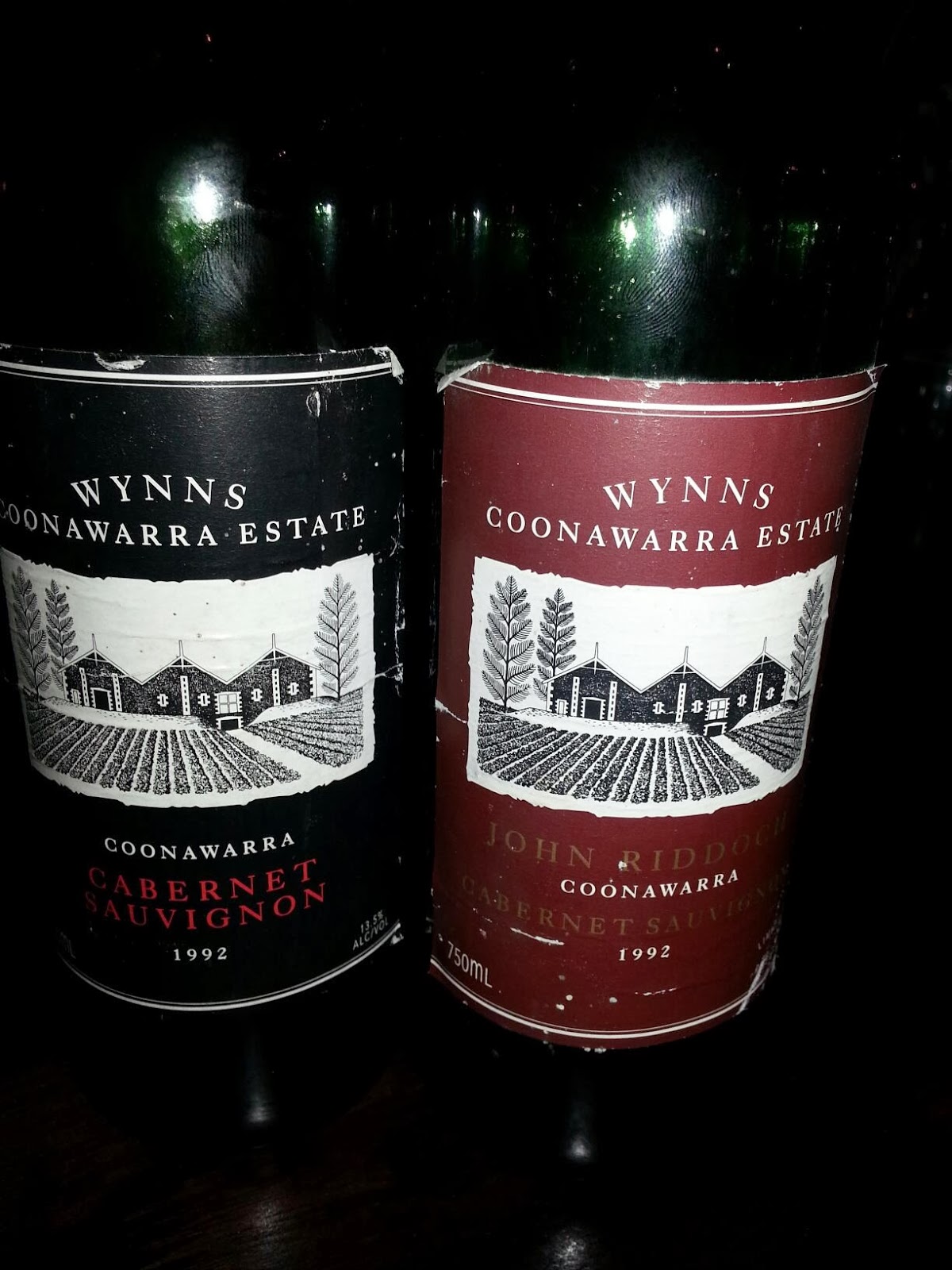It was a replay of the ‘Stroke of Luck’ get together held
just a year ago. On that occasion it
seemed we all pulled out the stops and brought some very special wines
along. There wasn’t the pressure to do
the same, but when old friends meet up, you can’t help but try to do well. The Man None Other and The Souther-Girl were
hospitable hosts yet again, and SWMBO and I were joined by The Jelly Bean Girl,
The Orbiter and the Even Stander for a night of bottles, cooked meats and
amazing cheeses.
Bubbles can’t be beaten for starting the session, and the NV Billecart-Salmon Brut Reserve showed
why it’s on top of the world at present.
Subtle depth and complexity, yet lovely fruit prominence, the
interaction with the autolysis just perfect.
Refreshing, yet creamy – what else could anyone ask for in an aperitif?
From the sublime to even more sublime, we moved into the
realms of richness with a 2004 Haag
Brauneberger Juffer Sonnenuhr Riesling Auslese #09 Gold Kap. We’d tried this years ago, on release, and it
was locked up and reductive. On this
rematch, this had transformed from ugly duckling to graceful swan. Extremely refined, smooth, creamy too, with
fine honey, toast and florals. The
acidity just showing great piquancy and poise.
My wine of the night already, but also in retrospect.
The reds were served from oldest to youngest as a precaution
if the oldies were going to fade. The
oldest was a 1965 Wynns ‘Black Label’
Coonawarra Cabernet Sauvignon. Still
alive, with rustic fruit, not totally clean and tertiary and decrepit. Still drinkable, but why would you. The Man None Other and The Orbiter took big
glassfuls, more out of politeness I believe.
The Orbiter suggest it was a grandmother. I saw it as a dirty old grubby aunty. Surprisingly, the cork, of good length, was
still pliable and did not break on extraction.
Moving into a more modern age, but with two decades on it
still, was the 1993 Penfolds ‘Bin 707’
Cabernet Sauvignon. Typically bold
on bouquet, promising super ripeness, sweet fruit, plums, liquorice and cedary
sweet oak. But surprisingly elegant on
palate and not the blockbuster as expected.
Instead, truly varietal, with blackcurranty flavours, and a mix of sweet
eucalyptus and vanilla, and savoury secondary earthy notes. In the glass, it got bigger and more
textural. No shrinking violet, but a
menacing big brother, happy to take on the world if need be. With this, there’s no rematch. It slugs you down straight away.
Onto another classic, a 1997
Sassicaia. This ‘super-Tuscan’ wasn’t
super on nose, and in fact shy and restrained.
A bit leafy and savoury olive-like, and strangely unimpressive on
bouquet. But once in the mouth, another
animal, no make that a beast. Fulsome,
grunty and textural, with raspy, rugged herbaceous hinted blackcurrants and
black berry fruited. Still lots of
primary fruits, and that hint of Bolgheri rusticity. However, there’s a mass of fruit depth, and
great amplitude, making it in the final analysis quite magnificent. I’d like a rematch in another decade or two,
when this will still be going strong.
The youngest table red was a 2004 Simi ‘Reserve’ Alexander Valley Cabernet Sauvignon. Ironically the most harmonious and possibly
the wine most like to mature most quickly.
More medium full bodied rather than full, and lovely integration, smooth
and mellow fruit-cake and herbs all melded together. Still some tannin and some acidity, but
smooth and becoming smoother. The wine
is a lighter one for sure, but its togetherness made it a complete drink. Lovely.
Then a 2009 Quinto Do
Retiro Vintage Port. This had won
some prestigious gong, and it was a delightfully approachable number. Sweet and ripe black berry fruits with an
intriguing herbal streak. Supple, but
with good structure. Softer acidity, and
mild underlying power. There’s density,
but roundness. Real port, and modern
approachability. A rematch in the next
two decades would yield the same result.
It sounds like a rematch will become a tradition…





